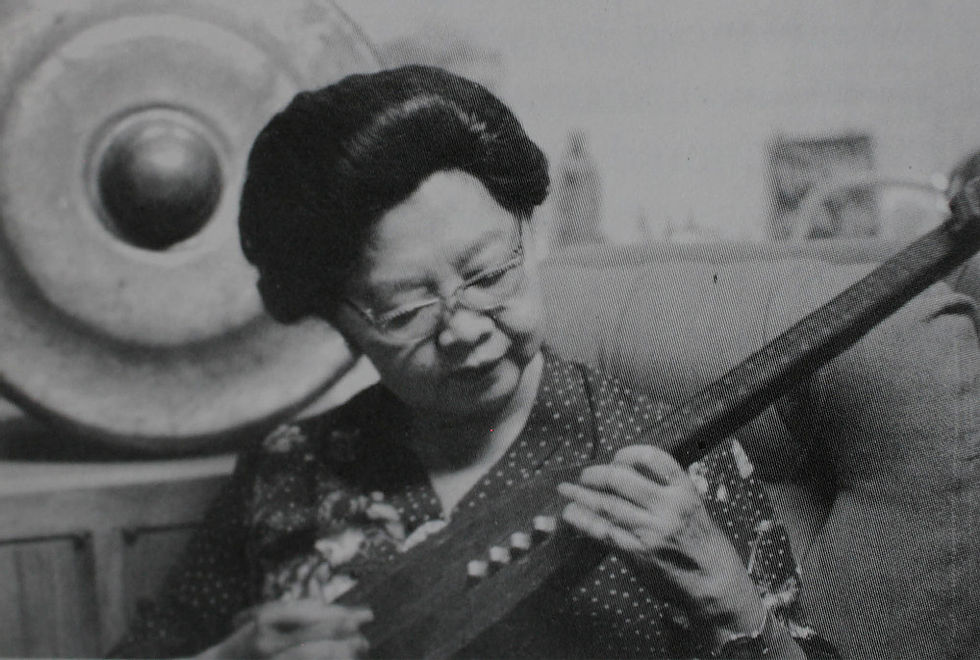
In this month that celebrates International Women’s Day, we focus on the female National Artists of the Philippines. The Order of the National Artists is bestowed on individuals who have made significant contributions to the development of Philippine arts. Originally instituted as an award in 1972, it was elevated to the status of an Order in 2003.
There are currently 73 National Artists of the Philippines, and 11 are women - about 15%. The field of Dance has the most number, four - i.e. Francisca Reyes Aquino (1973), Leonor Orosa Goquingco (1976), Lucrecia Reyes-Urtula (1988) and Alice Reyes (2014); for Music - Jovita Fuentes (1976), Lucrecia Kasilag (1989) and Andrea Veneracion (1999; for Theatre and Music - Honorata “Atang” de la Rama (1987); for Theatre - Daisy Hontiveros-Avellana (1999), Amelia Lapeña-Bonifacio (2018); and for Literature - Edith L. Tiempo (1999).

I was fortunate to have worked with, or have been in the same productions, with five of them during my days with Ballet Philippines. They are Alice Reyes, Leonor Orosa Goquingco, Lucrecia Reyes-Urtula, Lucrecia Kasilag, and Andrea Veneracion. I have experienced first hand their passion and dedication to their respective fields, and was certainly inspired.
Alice Reyes, through Ballet Philippines of which she was the co-Founder and Artistic Director in 1969, established a path for a professional career in dance. She was a dancer, teacher, choreographer, director, and producer, in the span of her career. With her wide ranging choreographic repertoire, she established a distinctly Filipino modern dance idiom that put the Filipino dancer in the global dance stage.

Leonor Orosa Goquingco was dubbed as the Mother of Philippine Theater Dance, a pioneer Filipino choreographer in ballet folkloric and Asian styles. Producing for 50 years highly original productions with her legendary Filipinescas dance group, she stylized Philippine dance patterns, introducing storylines and psychological themes to create drama, and brought traditional dance to international attention. I also recall her relating the story of how she performed Tinikling, a virtuosic dance by itself, en pointes - the first dancer to do so!
Lucrecia Reyes-Urtula is the dance director of the multi-awarded Bayanihan Philippine Dance Company, which was named in 1998 by Congress as the Philippine National Folk Dance Company, in appreciation and recognition of their pioneering efforts and international success. Her research on Philippine dance and presentation of these dances lead to a creative direction that earned critical acclaim and rave reviews from audiences in their world tours, instilling renewed pride among Filipinos of their cultural heritage and has cultivated international goodwill.
The foundation for the accomplishments of the first three mentioned National Artists were laid down by Francisca Reyes Aquino, the first woman to be conferred the National Artist Award, and the first in Dance. Acknowledged as the Folk Dance Pioneer, her work as folk dancer and cultural researcher preserved Filipino cultural traditions, which would otherwise have been lost. She was honoured with a Doodle by Google for her 120th birthday on March 9, 2019 which depicted various Philippine traditional dances.

Lucrecia Kasilag, known as Tita King, is regarded as the First Lady of Philippine Music. She is an educator, composer of numerous orchestral and chamber music, performing artist, musical director for the Bayanihan Dance Company and arts administrator (former President of the Cultural Center of the Philippines). Her music is distinct with her pioneering work of fusing ethnic music and indigenous Filipino instruments, with Western influences and orchestral productions.
Andrea Veneracion is highly esteemed for founding the award-winning and world famous Philippine Madrigal Singers group in 1963, and her achievements as choirmaster and choral arranger. A little bit of trivia for Edmontonians: she, along with the Philippine Madrigal Singers, performed in the Klondike Days in Edmonton in 2002.

Long before Lea Salonga made waves at the West End and Broadway, Jovita Fuentes was portraying lead roles in many famous operas like Cio-cio San in Giacomo Puccini's Madama Butterfly in 1925, Pietro Mascagni's Iris and Richard Strauss’ Salome in Europe. Her performance as Cio-cio San garnered rave reviews as “the most sublime interpretation of the part”, at a time when Filipino artists were scarcely visible in Europe.
Honorata “Atang” de la Rama was the undisputed “Queen of the Kundiman” and was the first actress in the very first Tagalog film when she essayed the same role in the sarsuela Dalagang Bukid’s film version. She believed that the sarsuela and kundiman best express the Filipino soul.

Daisy Hontiveros-Avellana elevated legitimate theatre and dramatic arts with breakthrough productions of classic Filipino and foreign plays. Hailed as the “First Lady of Philippine Theater”, she portrayed the role of Candida Marasigan in the stage adaptation of Nick Joaquin’s Portrait of the Artist as Filipino for decades. She, along with husband Lamberto Avellana who is also a National Artist, founded the Barangay Theater Guild by encouraging the establishment of performing groups and the professionalization of Filipino theater.
Edith L. Tiempo was a poet, fictionist, and critic, with timeless novels such as A Blade of Fern and The Builder. She also established the Silliman National Writers Workshop with husband Edilberto Tiempo.

The Grand Dame of Southeast Asian Children’s Theater, Amelia Lapeña-Bonifacio is the founder and playwright-director of the Teatrong Mulat ng Pilipinas. She was also involved in the production and design of an indigenous fusion of puppetry, children’s literature, folklore and theater.
Philippine art and culture as we know it today is largely due to the works of the National Artists. Whether you are an artist, a supporter of the arts, or just curious about Filipino achievements, their lives and work speak of exceptional talent, discipline, dignity, authenticity in spirit, and innovation. These are the distinct attributes of trailblazers. We honour their legacies to the Filipino.
*This article was published in the March 2021 issue of the Alberta Filipino Journal.

Comments